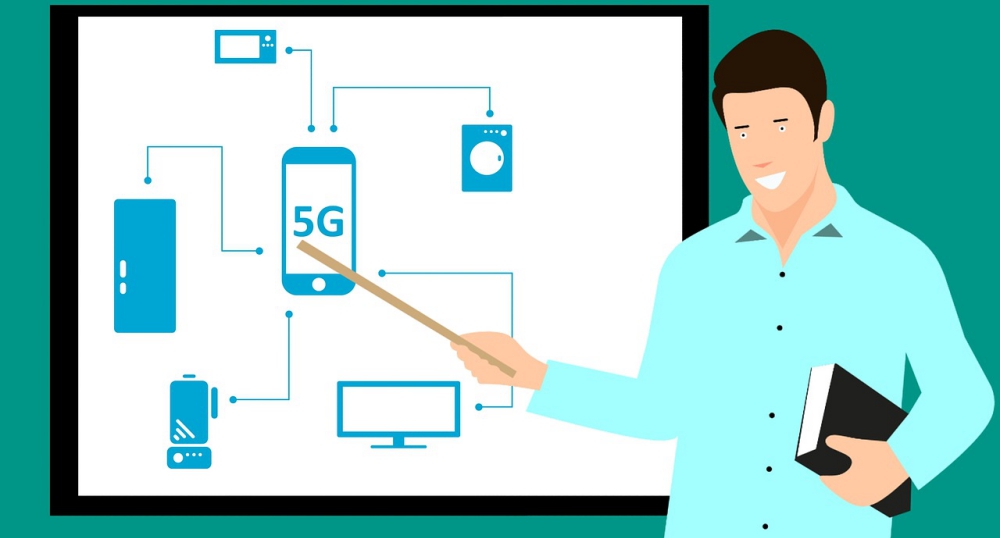
As the world edges closer to the reality of the fifth generation (5G) of wireless communications, a new age of product innovations is at the doorstep as wireless providers contend with the last remaining hurdles to a national rollout.
Since 4G LTE was introduced in 2010, offering speeds of up to 100 megabits per second (Mbps) for wireless communications and surpassing the performance of wired networks, we began taking full advantage of things like video conferencing and live streaming for music and video without the annoying stuttering or freeze frames.
Now we’re on the verge of 5G with 10 times the speed of 4G and lower network latency in the single-digit milliseconds. The anticipated performance is expected to unlock the potential of the Internet of Things (IoT), 4K video, remote-controlled robotics, telemedicine, autonomous driving, virtual reality and augmented reality.
Earlier this week, AT&T provided a glimpse into their 5G tests as they prepare for deployment in 12 U.S. markets later this year. Their current tests in cities of Waco, Texas, Kalamazoo, Michigan and South Bend, Indiana reveal potential gains of more than 1 gigabit per second (Gbps) in throughput. Meanwhile, Sprint and Verizon are promising 5G rollouts in several cities before the end of the year.
4G and 5G Will Co-exist
Unlike other breakthrough innovations, 5G will not cause anyone to lose sleep over investments in legacy technology – including 4G. That’s because while 4G is designed to replace 3G and 2G, 5G and 4G have been designed to work together – hand in glove.
Some carriers will assign 4G to customers as a national network while offering 5G in urban regions for super-high speeds. In other cases, 5G may be deployed broadly along with legacy 4G to manage a seamless transition over time. In the meantime, 4G will continue to evolve and improve.
5G Migrations Not Quite as Fast
Even as network operators around the world race toward the finish line with 5G, industry transition and adoption will take time. The final specification for 5G is not expected until mid-year while 5G end-user trials to test various aspects of the technology represent a temporary framework with a few restrictions and no interoperability between network operators.
Mobility will also be limited by the absence of cell-site handoffs, so the initial framework only provides fixed wireless access. Consumers can expect to see 5G implemented over time, first with fixed locations, then later with mobility. But with 4G improving, the pathway to 5G shouldn’t be an overly rocky road.
5G, IoT and Massive Data Volumes
5G’s most significant impact might be seen with the Internet of Things (IoT), enabling us to fully leverage the potential of this revolutionary technology. This level of wireless connectivity is at the heart of IoT to connect people and data more than ever before.
5G will help IoT reach its fullest potential by transporting intelligence, processing power and communication capabilities quickly and effortlessly across networks, mobile devices and connected sensors.
Many experts share high hopes and expectations that 5G will deliver. But to handle 5G’s throughput capabilities and massive scalability, it will be critical to utilize software defined networks (SDN) rather than the old “big iron” paradigm.
Many companies have been testing and deploying SDN to increase bandwidth and lower costs in their corporate networks. SDN makes networks more agile and efficient, enabling new functionality on software rather than on a hardware-constrained timeline.
Networks will have to run at full steam to accommodate the massive amounts of data 5G is expected to produce. It’s predicted the world will contain 50 billion connected devices by 2020 – all collecting and transmitting data thanks to 4G and 5G.
According to a European Union report, 5G is expected to produce 10–100 times more data and 10–1000 times higher traffic volumes over the next couple of years. In an extreme scenario in which all humans stream HD video on mobile devices for 16 hours a day, the report estimates each person will consume 6 terabytes of data per month.
Even as 5G slowly gets its feet on the ground, our hunger for data and mobile content anywhere, anytime might serve as the largest challenge for this next evolution in wireless service.
Ken Hosac, VP, IoT Strategy, Cradlepoint will keynote The Smart City Event, June 4-5 at the Cobb Galleria, Atlanta, Georgia, to discuss 5G and many other Smart City Issues. Register now.
Edited by
Ken Briodagh





